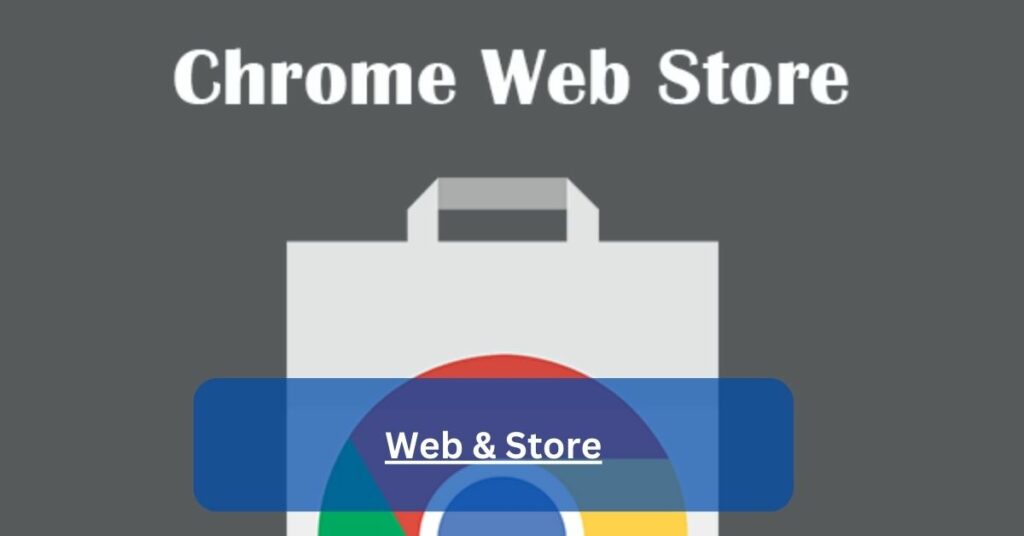Web & Store – A Guide for the Tech-Savvy Explorer

Ready to delve deeper into the subject? Well, buckle up because we’re about to dive deep into the heart of online wonders and e-commerce excitement.
The web is a digital space connecting information globally, while a Store is an online marketplace for buying and selling goods or services.
In this guide, we’ll solve the secrets of creating a fantastic web presence and setting up your very own digital store. Let’s get started!
Navigating the E-commerce Seas– Setting Up Your Online Store
So, you’ve got a brilliant idea for a product or service, and now you want to share it with the world. The first step? Setting up your online store! Think of it as your digital storefront, open 24/7 for customers from every corner of the globe.
Choosing the Right Platform:
There are numerous platforms out there to help you build your dream store. Shopify, WooCommerce, and Magento are like the superheroes of the e-commerce world. They provide user-friendly interfaces, customization options, and seamless payment gateways, making it a breeze for you to get your products out there.
Designing for Delight:
Your store’s design is like the packaging of a gift – it should be attractive and inviting. Choose a clean and user-friendly design that reflects your brand personality. Remember, simplicity is key. No need for flashy fireworks; a clean layout and intuitive navigation will do wonders for your customers.
Web Development Insights– Crafting a Digital Wonderland!
Now that your store is up and running let’s talk about the magic behind the scenes – web development. This is where the digital artisans bring your vision to life, creating a seamless and enchanting user experience.
Foundations: HTML, CSS, and JavaScript Essentials
Imagine HTML as the skeleton, CSS as the skin, and JavaScript as the muscles of your website. They work together to create a living, breathing entity. HTML structures your content, CSS makes it visually appealing, and JavaScript adds interactivity. It’s like a symphony of coding brilliance!
Full-Stack Magic:
Ever heard of full-stack development? It’s like being a superhero with powers on both sides – front-end and back-end. The front end is what your customers see, while the back end is the behind-the-scenes hero handling databases and server interactions. Mastering both? That’s the key to web development supremacy!
Hosting the Party– Choosing the Right Web Hosting!
Picture your website as a VIP guest at a grand party. Now, imagine web hosting as the venue – it needs to be reliable, secure, and able to handle a bustling crowd. Here’s where you choose the perfect hosting service to ensure your website is the life of the digital party.
Top Picks for Hosting Heroes:
Bluehost, HostGator, AWS, and DigitalOcean are like the A-list venues for your website. They offer reliable servers, top-notch security, and excellent customer support. Remember, a happy website is a well-hosted website!
Scalability and Security:
As your website grows, scalability becomes crucial. Choose a hosting provider that allows for seamless expansion to accommodate your increasing traffic. Security is non-negotiable – you wouldn’t want uninvited digital gatecrashers ruining the fun.
The Symphony of Online Presence– More Than Just a Website, Read More To Find Out!
Now that your website is up and running let’s talk about making your presence known in the vast digital landscape. It’s not just about having a website; it’s about creating a brand persona that resonates with your audience.
Social Media Serenade:
Think of social media as the loudspeaker for your digital concert. Create engaging content, interact with your audience, and build a community around your brand. Platforms like Instagram, Twitter, and Facebook are your best friends in this journey.
SEO Ballet:
Search Engine Optimization (SEO) is the dance that gets your website noticed in the vast online crowd. Use relevant keywords, create quality content, and make your website Google’s favourite dance floor. Remember, the more visible you are, the more visitors you’ll attract.
Mobile Marvel– Bridging the Gap Between Web and App!
In this age of smartphones, your website and mobile app should be like best friends – always in sync. Responsive design and a well-crafted back-end ensure a smooth transition between the web and mobile experience.
Responsive Web Design:
Imagine your website as a shape-shifter, adapting seamlessly to different screens – that’s responsive web design. Whether your audience is browsing on a desktop, tablet, or smartphone, your website should look and feel fantastic.
Web-Based Back-End for Apps:
Building a mobile app? Consider a web-based back-end to manage data and content. This ensures consistency between your website and app, creating a unified brand experience for your users.
How do I choose the right e-commerce platform?
Choosing the right e-commerce platform is a crucial decision that can significantly impact the success of your online store. Here’s a detailed guide to help you navigate this important choice:
1. Define Your Needs:
Before diving into the sea of e-commerce platforms, take a moment to define your business needs. Consider factors such as the type of products you’re selling, your target audience, budget constraints, and the level of customization you require.
2. User-Friendly Interface:
Opt for an e-commerce platform with an intuitive and user-friendly interface. This is particularly important if you’re not a tech guru. Shopify, for example, is renowned for its simplicity and ease of use, making it a great choice for beginners.
3. Budget Considerations:
Different e-commerce platforms come with different pricing structures. Some charge a monthly fee, while others may take a percentage of your sales. WooCommerce, an extension for WordPress, is known for being cost-effective, especially if you’re already using WordPress for your website.
4. Scalability:
Think about the future growth of your business. Choose a platform that can scale alongside your success. Magento, for instance, is a robust solution suitable for larger enterprises with plans for expansion.
5. Integration and Plugins:
Look for platforms that integrate seamlessly with other tools and services. Whether it’s payment gateways, marketing tools, or analytics, the ability to connect with third-party applications can enhance the functionality of your store. Shopify and WooCommerce offer a wide range of plugins for added flexibility.
6. Design and Customization:
Your online store is an extension of your brand, so choose a platform that allows for easy customization. BigCommerce, for example, offers a variety of pre-built templates and customization options, giving you the creative freedom to make your store uniquely yours.
7. Payment Options:
Consider the payment gateways supported by the e-commerce platform. Ensure that it aligns with the preferences of your target audience. Shopify and BigCommerce, for instance, support a wide range of payment options, providing convenience for both you and your customers.
8. Security Measures:
Security is non-negotiable in the digital world. Make sure the e-commerce platform adheres to industry-standard security practices. Shopify and Magento, being popular choices, prioritize the security of online transactions.
9. Customer Support:
Assess the level of customer support provided by the platform. You never know when you might need assistance. Shopify, for instance, is known for its excellent customer support, offering live chat, email, and phone support.
10. Reviews and Testimonials:
Before making a final decision, research customer reviews and testimonials about the e-commerce platform you’re considering. This can provide insights into the real-world experiences of other users.
Remember, the right e-commerce platform is the foundation of a successful online business. By carefully considering your specific needs and weighing the features of each platform, you’ll be well on your way to creating a thriving online store. Good luck!
FAQ Extravaganza: Answering Your Burning Questions
1. What is the significance of SSL certificates for my online store?
An SSL certificate encrypts the data exchanged between your website and its visitors, enhancing security. This is particularly important for online stores as it ensures the protection of sensitive information such as customer payment details.
2. What’s the difference between front-end and back-end development?
Front-end is what users see (design and interactivity), while the back end handles databases, servers, and business logic.
3. Why is web hosting important?
Web hosting ensures your website is accessible to users 24/7. Choose a reliable host for a smooth online experience.
4. Do I need a mobile app for my business?
It depends on your target audience. If your customers are mobile-savvy, a well-designed app can enhance their experience.
Ending Our Discussion Here:
Congratulations, tech-savvy explorer! You’re now equipped with the knowledge to conquer the digital realm. From setting up your online store to mastering web development, the possibilities are endless.
Remember, the online world is vast, but with the right knowledge and a sprinkle of creativity, you’re destined for digital greatness. Happy exploring! 🚀







